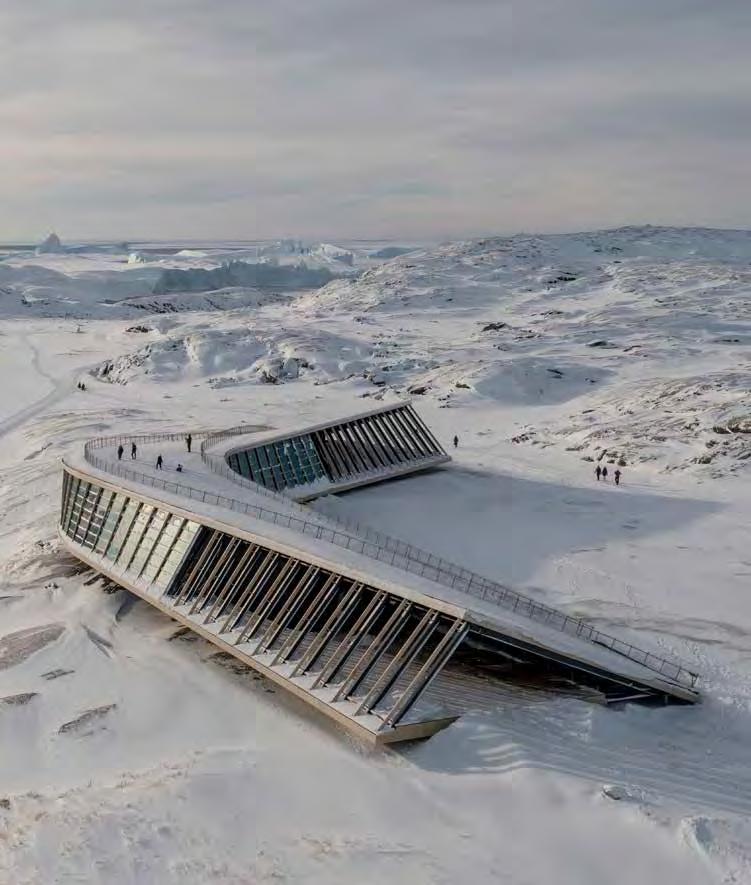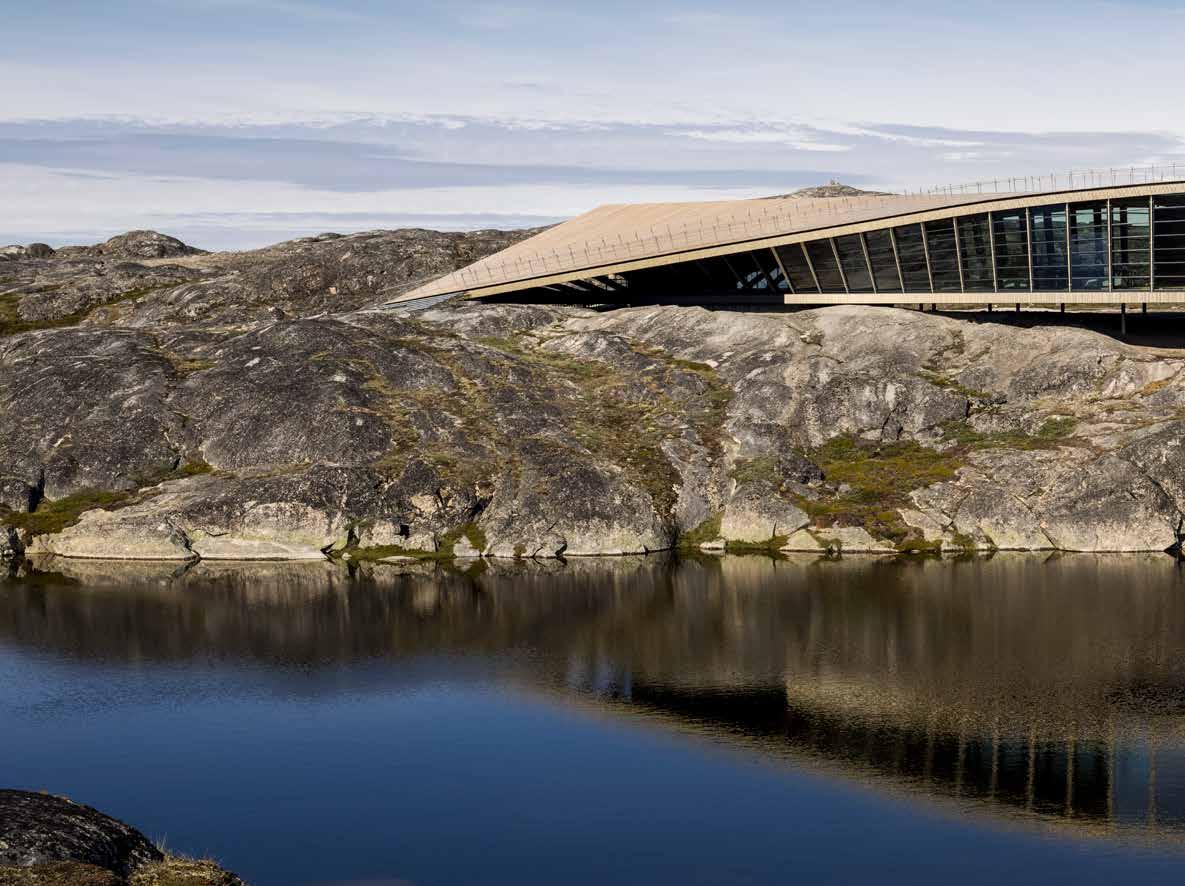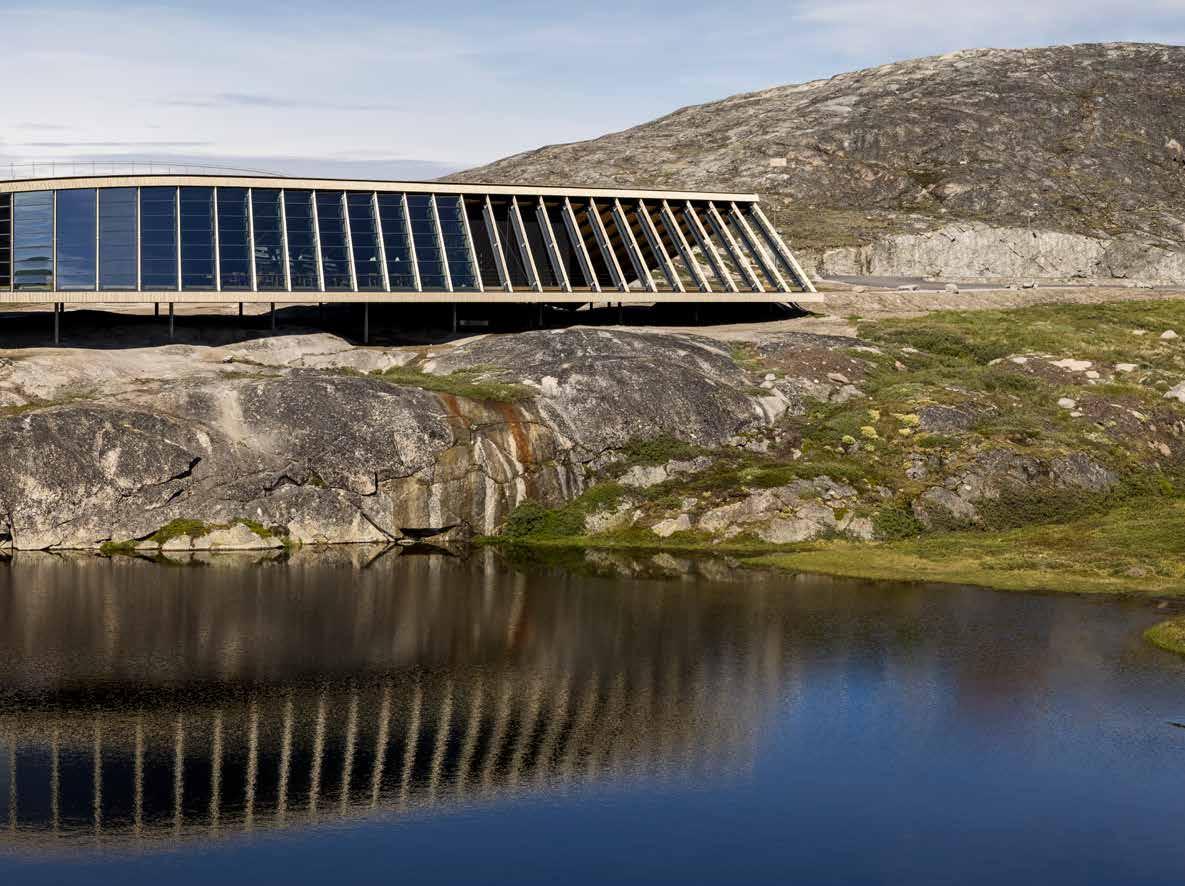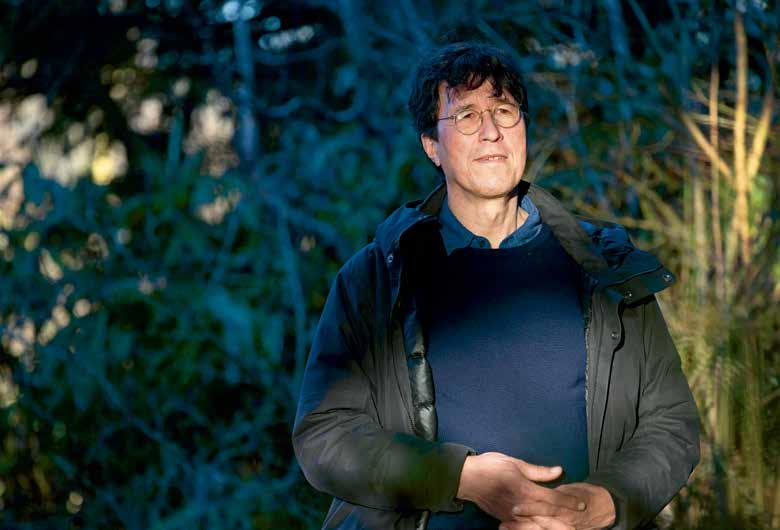
18 minute read
An engaging introduction to our culture and nature
I had the privilege of being invited to take part in the development of the Icefjord Centre by the architect who designed the building. We agreed that it should be a meeting place. A place for tourists and locals to meet as well as a place where different times – past and future – meet and are tied together. Here we can tell the story about what ice and the ice ages have meant and continue to mean for human beings. About the first Stone Age people who settled here 4,400 years ago, established the settlement of Sermermiut and are now known as the Saqqaq people. And how, by studying the layers of the inland ice, we can see volcanic eruptions, historical climate change and the amount of greenhouse gases in the atmosphere.
From a strictly selfish perspective, the current climate change has been a positive influence for Greenland. Times are good. But the vast majority of Greenlanders are well aware that on a global scale, climate change is a worrying development. Therefore, Greenland should not just be a symbol of this but part of the solution.
Over the past few years, I have been working with a team of scientists to collect so-called glacier flour: particles of rock that the glaciers create and carry with them as they scrape over the mountains in Greenland. Glacier flour is full of minerals that can be used as natural fertilizer on fields in other parts of the world, especially in tropical regions. In our test sites, the yield has increased by 30 to 50 per cent. Naturally, we should take advantage of this, just as we should seize the opportunity to use
‘It is time to take action to address the profound climate change that is clearly visible on the Icefjord in Ilulissat. Greenland should not just be a symbol of the challenges but also a part of the solution.’
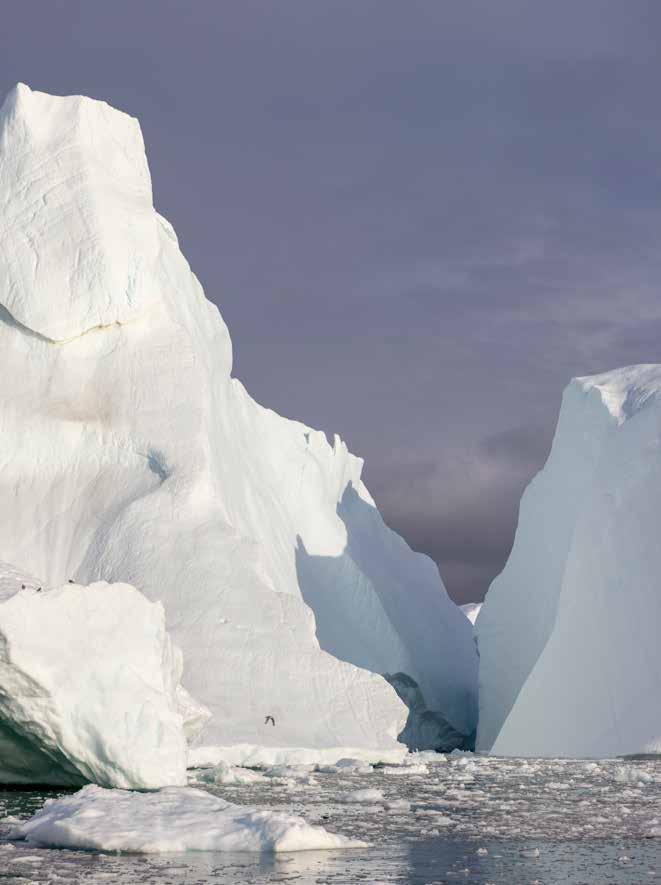
MINIK ROSING
Minik Rosing is a Greenlandic geologist known all over the world. Since 2000, he has been Professor of Geology at the Natural History Museum of Denmark, University of Copenhagen.
Rosing’s work concerns the impact of life on the geological evolution of the earth’s continents, oceans and climate. Among other contributions, he has identified traces of life in a 3,800-million-year-old Greenlandic rock, a discovery that proved the presence of life on earth, in the form of algae, 300 million years earlier than previously documented.
In addition to his work as a geologist at the University, Minik Rosing is the author of several books and is a popular speaker. He often operates in the borderland between science and art, which included his involvement in the architectural design of Ilulissat Icefjord Centre and his role as chief curator for Denmark’s contribution – Possible Greenland – to the Venice Biennale of Architecture in 2012.
Minik Rosing’s experiences were relayed in an interview with author Steen Breiner.
meltwater from the ice cap to build hydroelectric power stations that generate clean energy.
Human beings created the climate crisis, but we should not be too ashamed to seize the opportunities we have for solving the problems. That would be really stupid. And we do not have the time to be stupid.
Ten thousand years from now, when future geologists look at the layers in the inland ice or in a rock, they will be able to see that the concentration of greenhouse gases rose dramatically during our time. I hope that by then, they will also see the numbers levelling off or perhaps even dropping.’
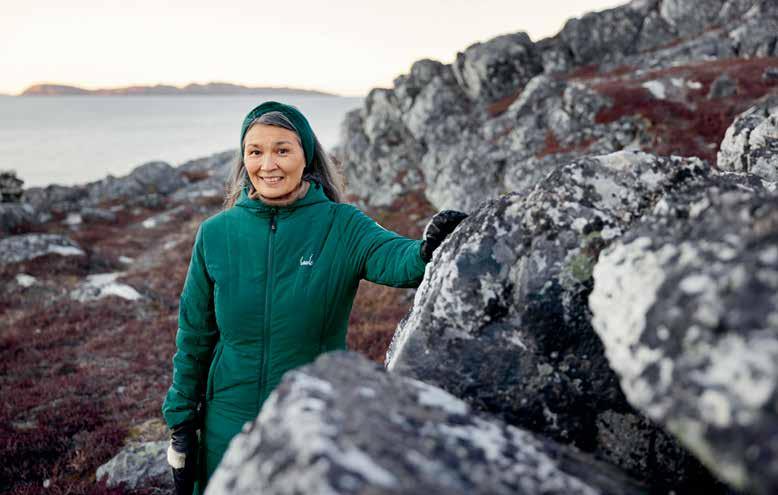
As an archaeologist, Pauline Knudsen has spent much of her life in nature. Today she is responsible for communicating Greenland’s nature and history to tourists as well as Greenlandic children and youth.
Both tourists and local schoolchildren should have a fascinating and engaging experience when they visit the Ilulissat Icefjord Centre or one of the other five visitor centres that are currently being established in Greenland. Pauline Knudsen is responsible for realizing the ambitious plans.
All the children’s senses are engaged when school groups from Ilulissat visit the Icefjord Centre. The goal is not just to teach young people about Greenland and about nature but also to spark their interest in the topic to encourage them to choose the communication of cultural and natural history as a profession. There can be many reasons to change course in life. For Pauline Knudsen, the deciding factor was her realization that there comes a time when it is not so easy to carry out archaeological fieldwork in the Greenlandic landscape and to be skipping about in the mountains. ‘Age was probably the main reason why I began thinking about doing something else. And when I saw that the Government of Greenland was looking for a director of the Greenland Visitor Center, an inner voice told me this could be the job for me,’ says Pauline. The Greenland Visitor Center is a new national institution that, in time, will be responsible for operating six visitor centres: one in each of the five Greenlandic municipalities and an additional one in East Greenland. The centres are being established in response to Greenland’s growing significance as a tourist destination. ‘To meet this demand, we need to develop good destinations and experiences for tourists. We should not compete with private businesses, so we won’t be running a restaurant or a conference venue; instead, we intend to offer something supplementary, an added reason to visit,’ says Pauline. The Ilulissat Icefjord Centre is one of the six visitor centres, and the first to open. Here, visitors can travel through time in the exhibition Sermeq pillugu Oqaluttuaq – The Story of Ice.
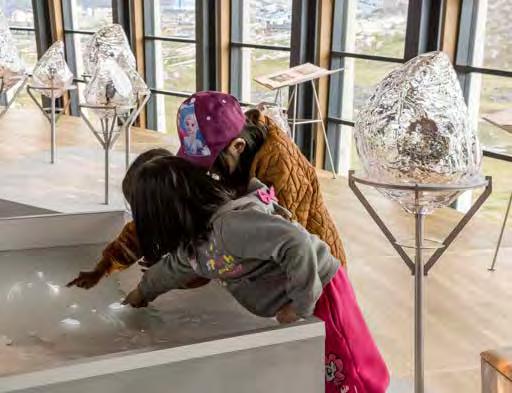
LIVING EXHIBITION Kangia – Ilulissat Icefjord is home to the largest and most productive glacier in the northern hemisphere, Sermeq Kujalleq. The glacier calves icebergs that float majestically towards the mouth of the fjord at Ilulissat. Every year, the 7-kilometre-wide glacier produces 35 cubic kilometres of ice. The glacier has always been the lifeblood of the people living on Disko Bay. Historically, when the ice retreated during the summer and the animals came in close to the coast, the Inuit would travel to their summer camps to catch reindeer, trout and Greenland halibut. Both fishermen and
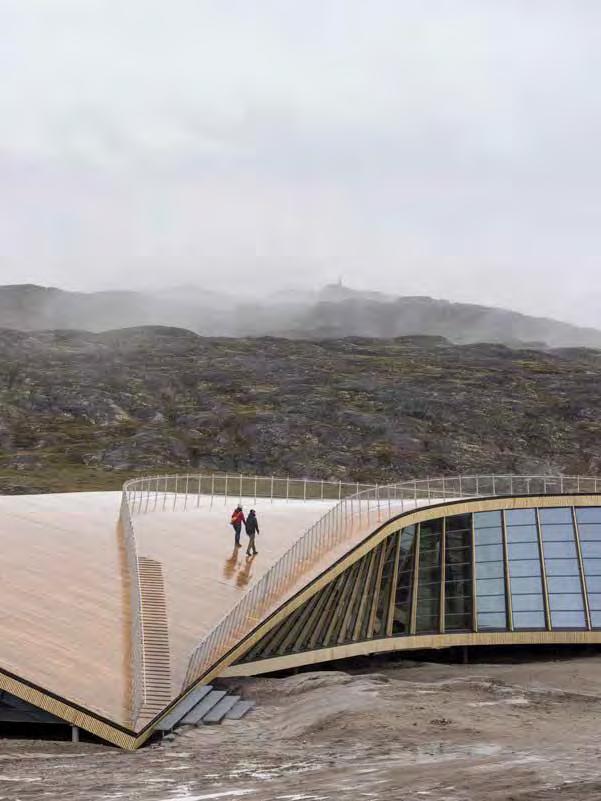
hunters found a livelihood in the rich natural landscape, and now that the sea around Ilulissat is ice-free, the main catch is Greenland halibut and shrimps. On the Icefjord, manmade climate change is clearly visible. The melt-off from Sermeq Kujalleq is accelerating, and the glacier has retreated many kilometres. Since 1850, temperatures have risen twice as fast in the Arctic as in the rest of the world. These two topics, ice and climate change, are the main themes of the permanent exhibition at the Icefjord Centre. The exhibition, which was developed and designed by JAC Studios, is based mainly on digital and audiovisual elements that stimulate the senses and encourage reflection, both during and after the visit. ‘The exhibition represents a renewal of the conventional way of presenting Greenland’s past, which typically involved objects lined up in a row for people to look at. At the Icefjord Centre, we wanted to create an exhibition that is more dynamic and accessible. With our culture, nature and climate, we have a lot to offer that many people may not know much about. They come to Greenland to see the impact of climate change and the melting ice, and we capture that in the exhibition. We want people to understand that this is serious,’ Pauline explains. In addition to passing on new knowledge and insights to tourists, the Icefjord Centre also has a school service, which organizes visits for all schoolchildren in Ilulissat. As a former teacher, the director is particularly delighted with the interest from this group.
‘It is so rewarding to see children and young people take an interest in what you tell them, to have the opportunity to pass on your interest in topics that you’re passionate about. That is why we should also demonstrate to young people that the presentation of our cultural and natural history can also be a livelihood, not least in a future with more tourists who are keen to learn about Greenland,’ says Pauline.
AN UNFORGETTABLE EXPERIENCE Pauline was born in Upernavik and has worked in lived in several different towns in West Greenland. Today, she has her office in the capital, Nuuk, but over the past couple of years she has taken numerous flights to Ilulissat to follow the construction of the Icefjord Centre. ‘It’s so fascinating to see the ice flow through the fjord and the whales feeding near the ice. This was where I realized that ice is not an inert substance. The currents around the icebergs create turbulence, which stirs up the sea floor and increases the production of phytoplankton, which whales and other species feed on. So an iceberg is not just an iceberg. It is a source of life in many ways,’ says Pauline, who has some recommendations for the tourists: ‘Visit the exhibition and then take a walk along the fjord. Hear the whales blow and see the large icebergs as they float by. If you’re lucky, you might see one of them flip over. These are experiences you will never forget.’
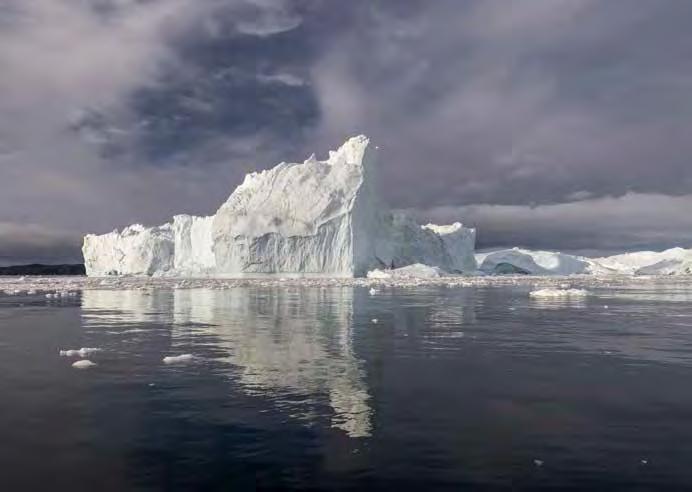
At first glance, an iceberg may seem like an inert substance, but in fact it is a basis for life. The currents around the icebergs create turbulence, which stirs up the sea floor and increases the production of phytoplankton, which whales feed on. That is one of the reasons why whales are a fairly common sight in the Icefjord.
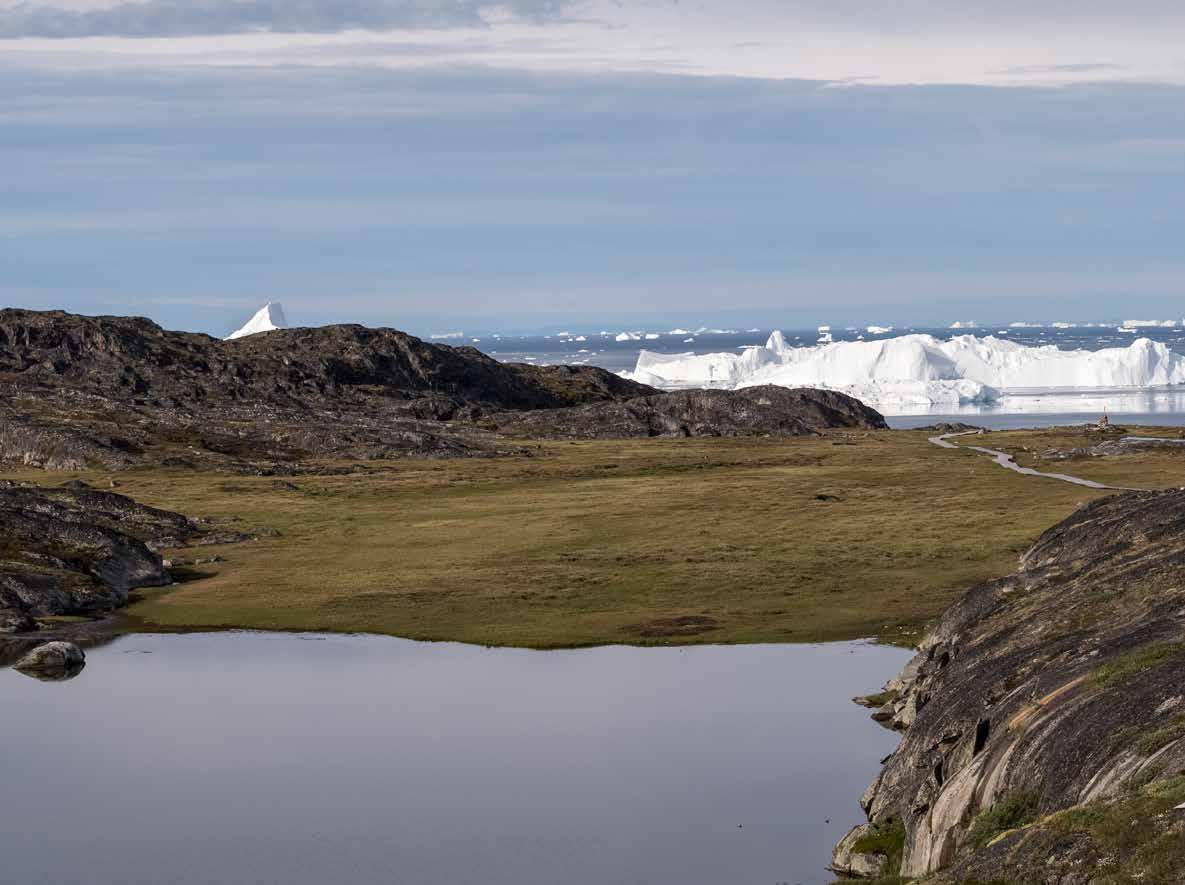
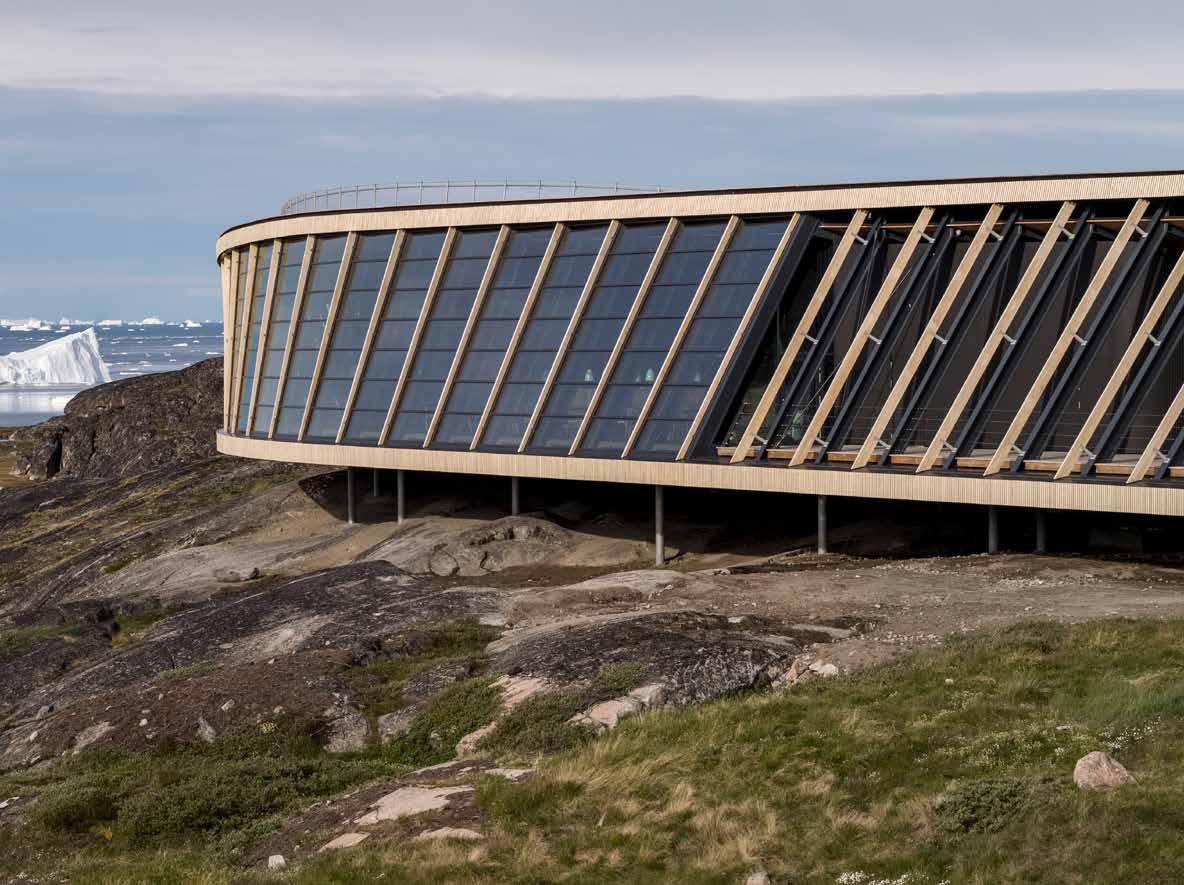
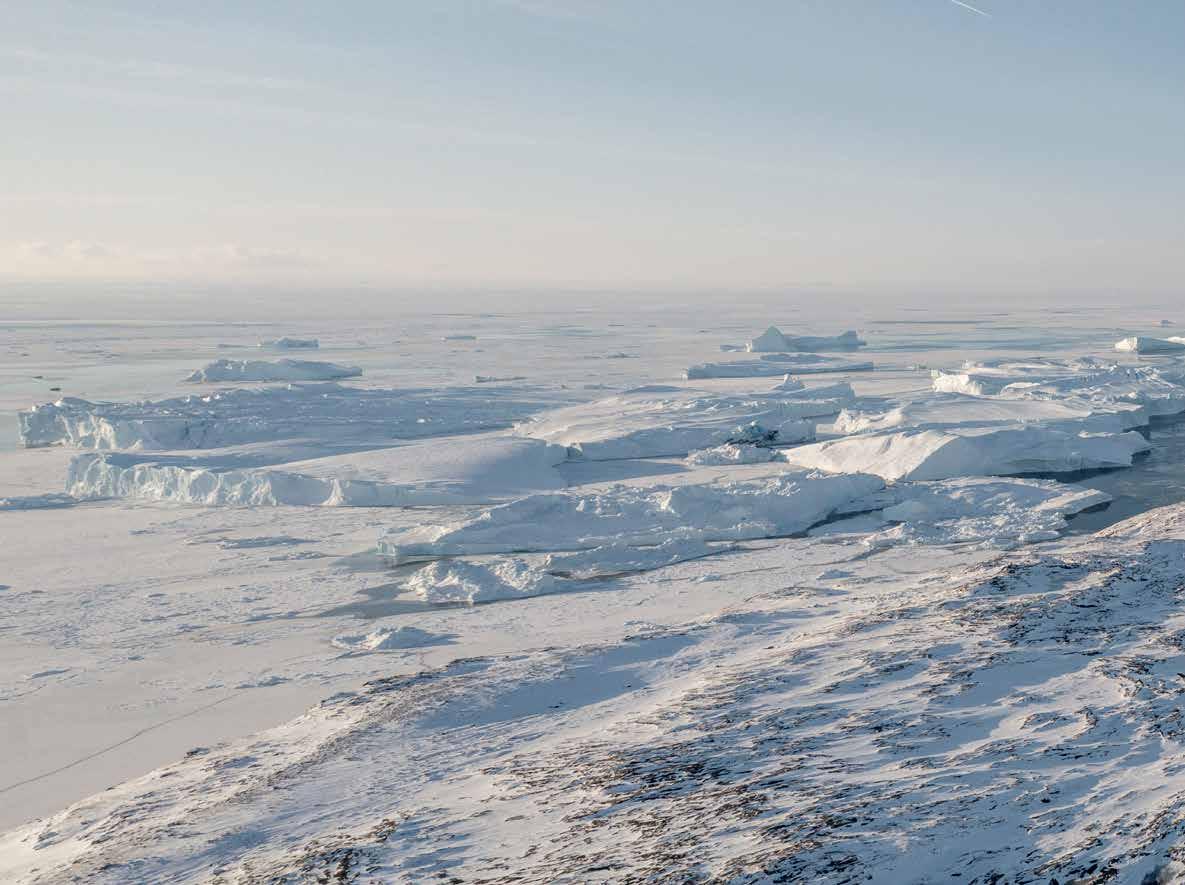
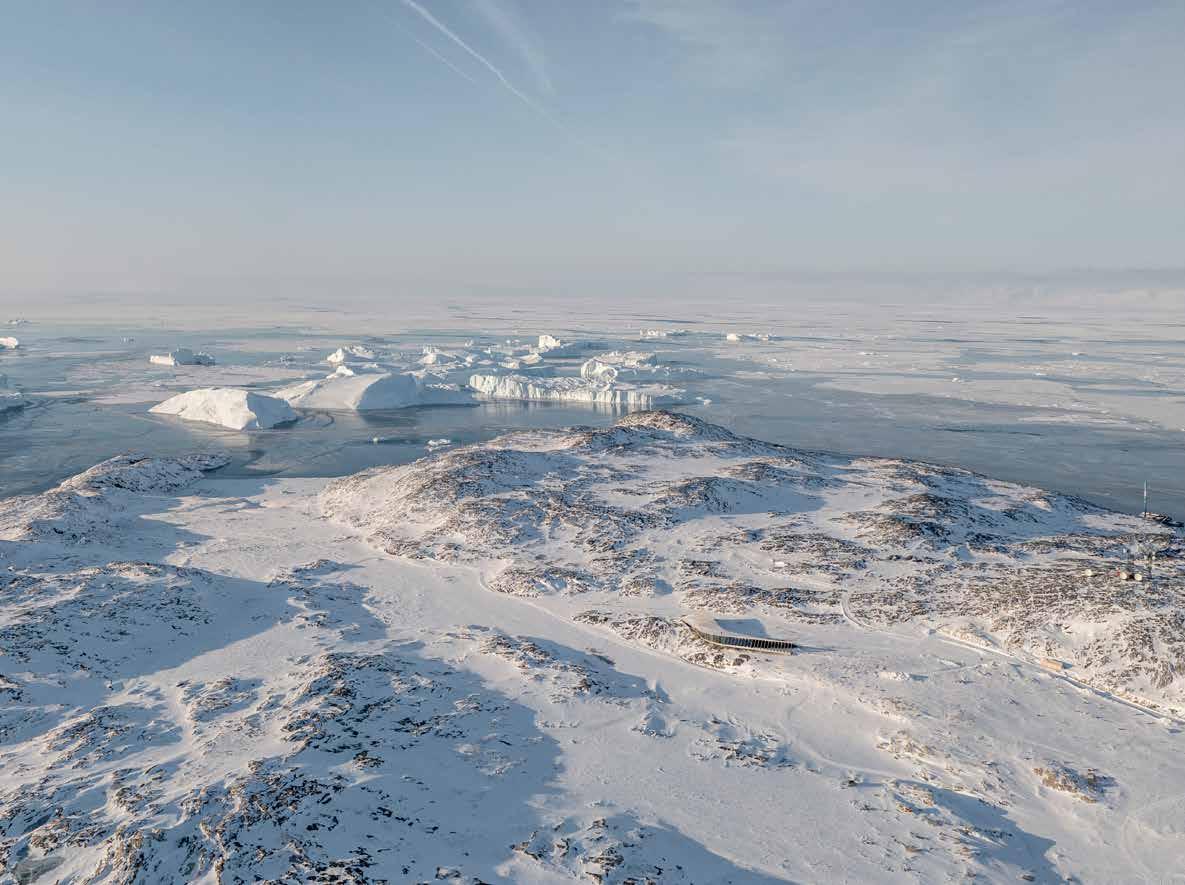
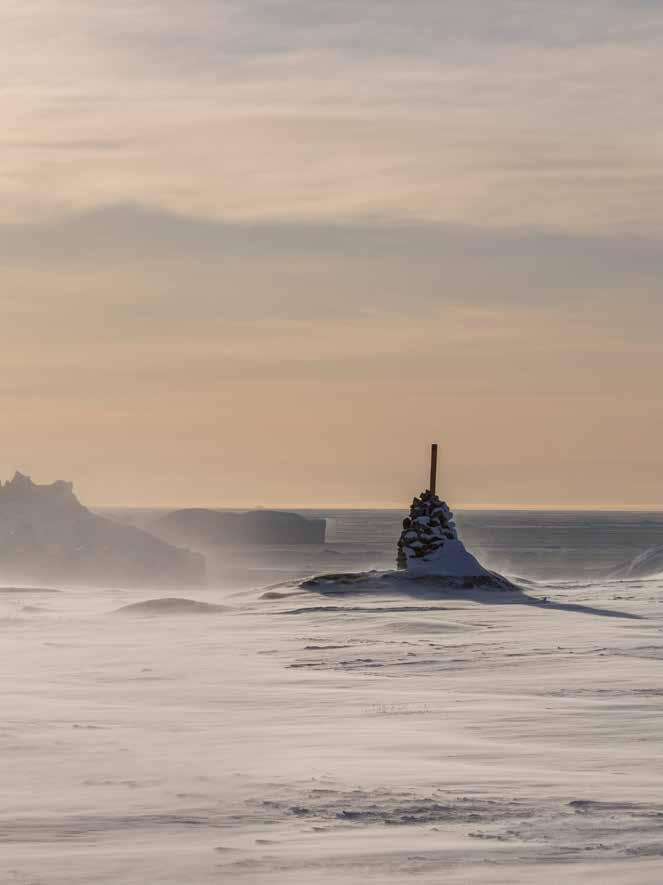
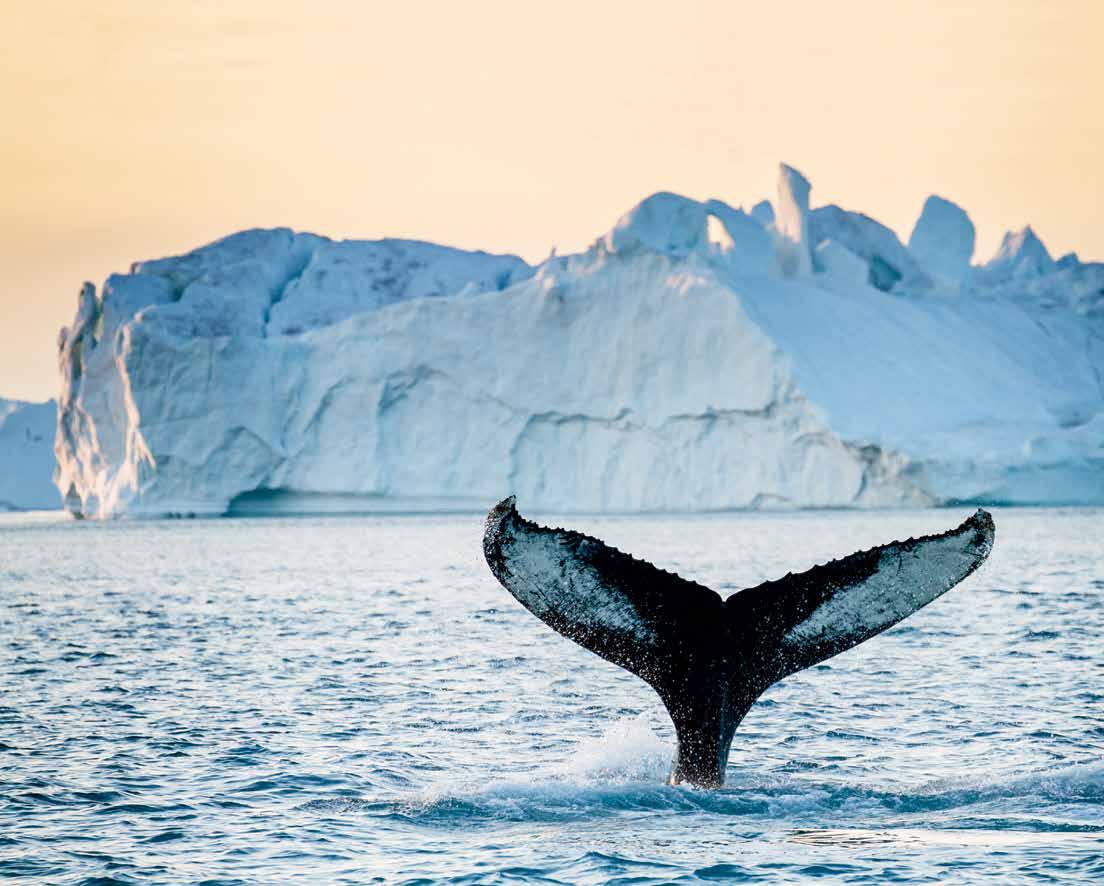
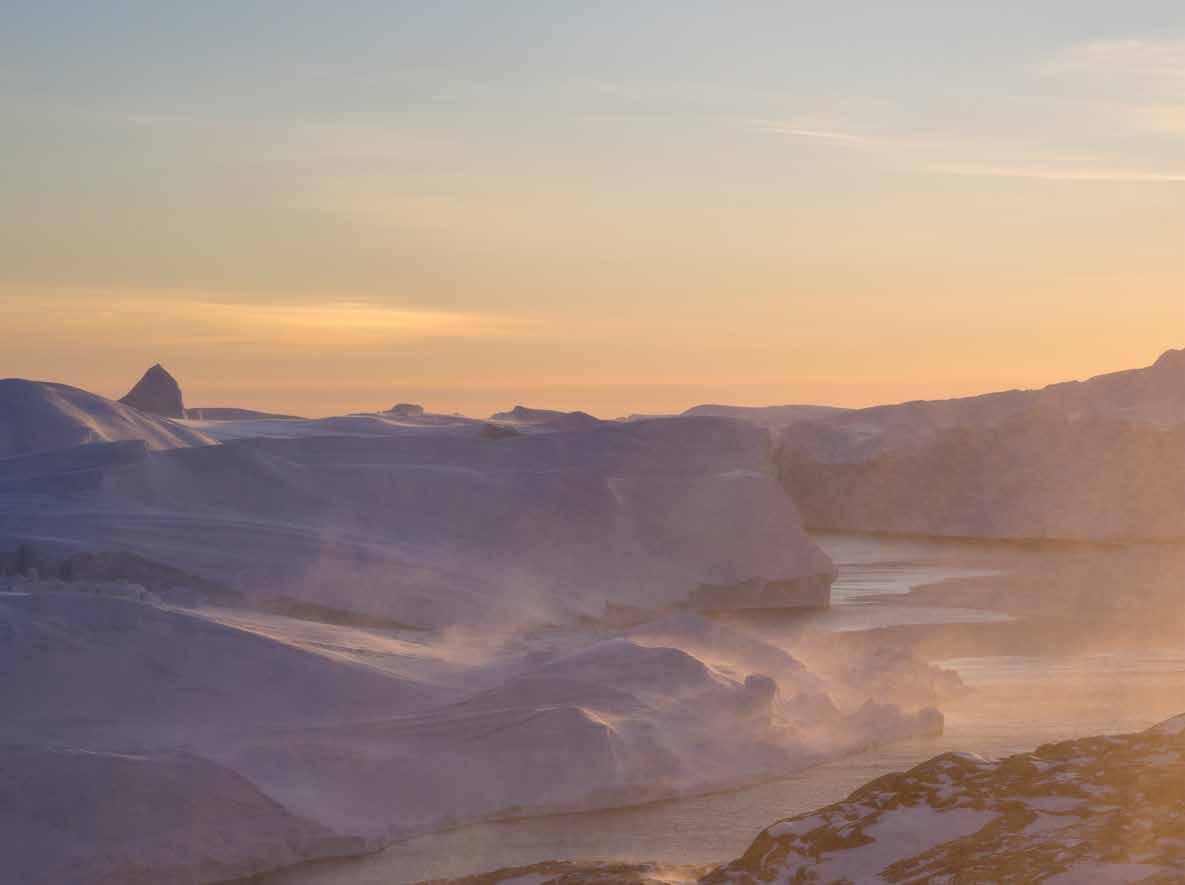

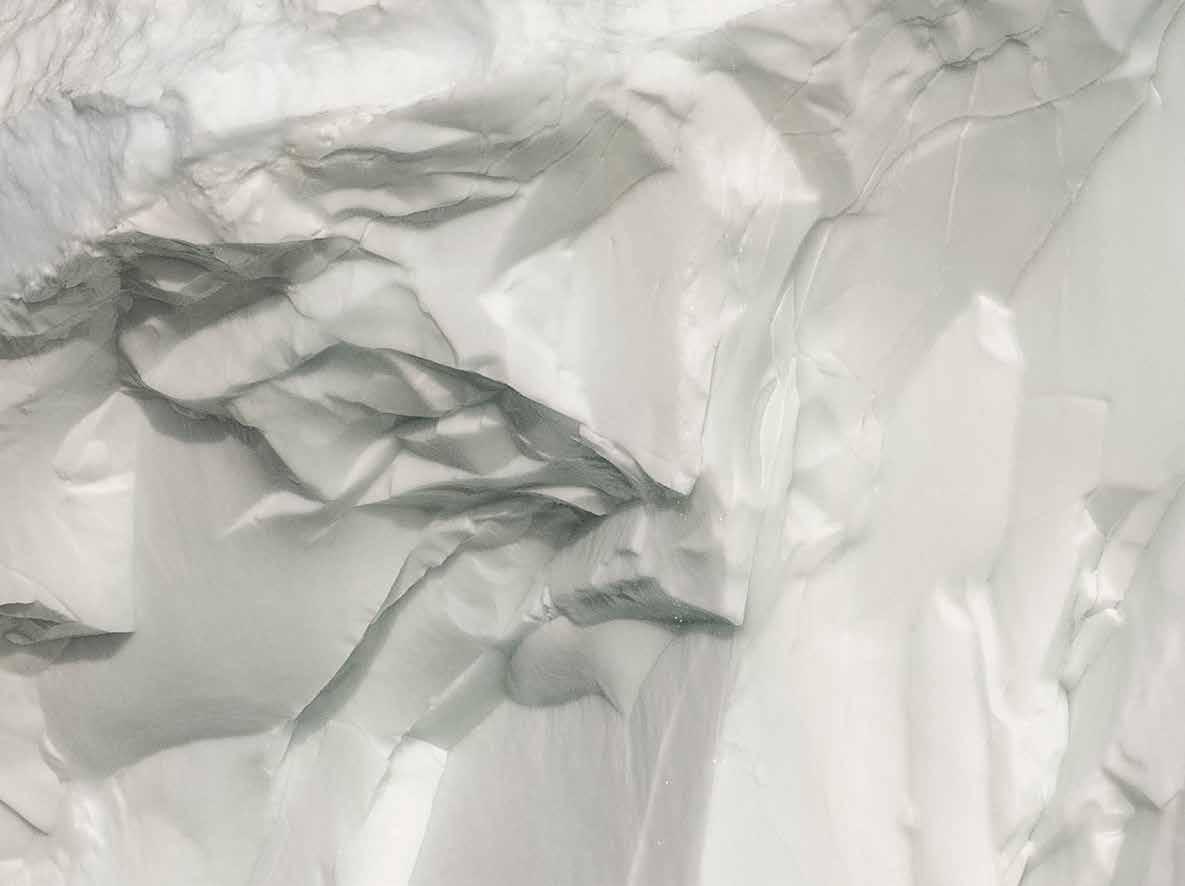
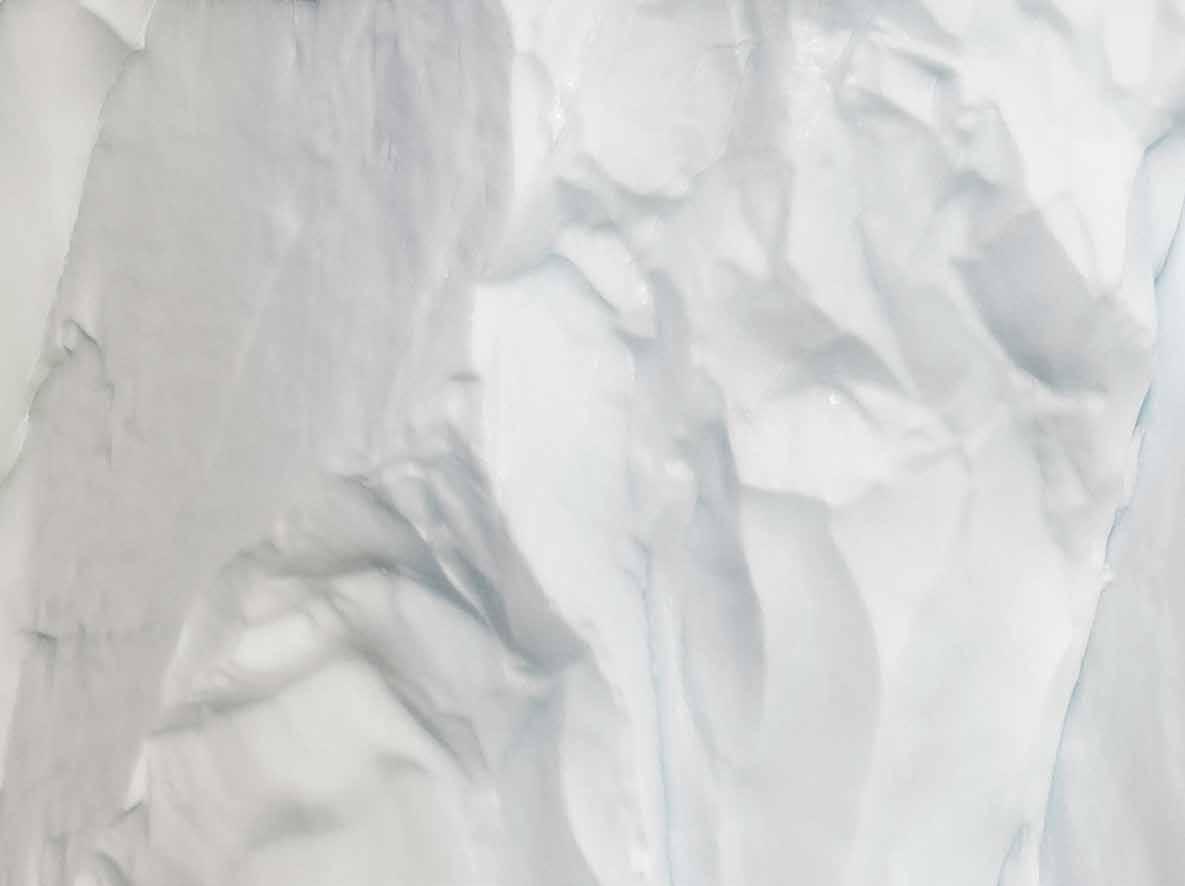
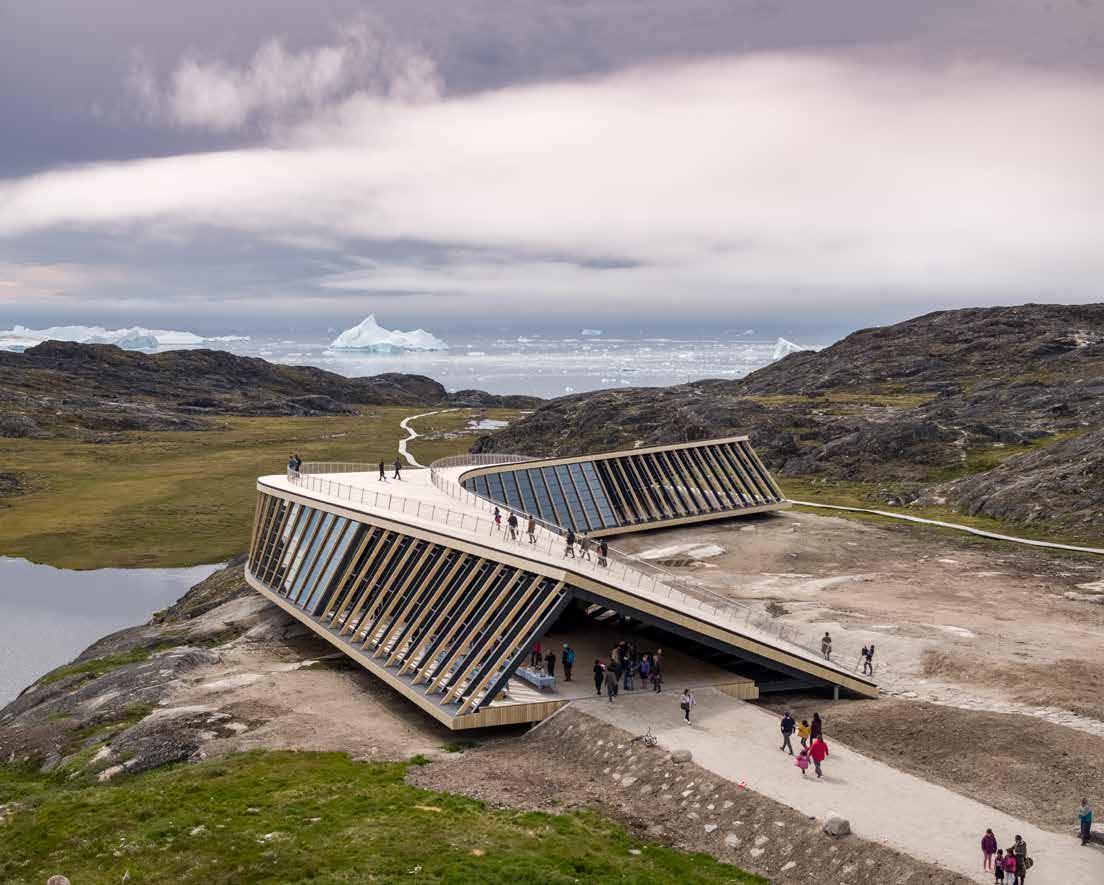
A snowy owl flying low over the landscape. The Dorte Mandrup architecture firm has translated grand visions and ambitions into a building that tells the story of the Icefjord, local nature and cultural history and the impact of climate change while also serving as a meeting place for the local community.
THE ARCHITECTURE
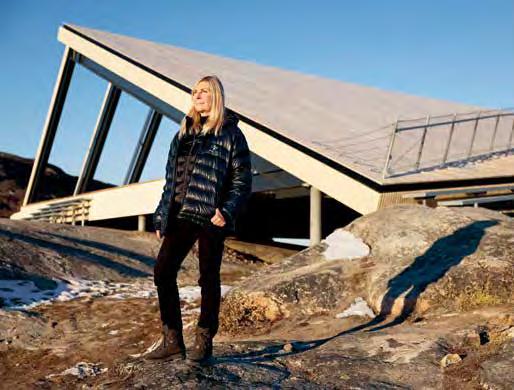
‘Our basic concept was to design a building that would bring together all the site-specific qualities and both underscore and elevate them. The site and the content were to determine the design of the building,’ says Dorte Mandrup about the process of designing the Icefjord Centre in Ilulissat. To the internationally acclaimed architect Dorte Mandrup, it is a special feeling every time a building that she and her team designed begins to take shape on the construction site. ‘Then I know for certain that the project is going to be realized. Until that point, any number of things can go wrong. We have been involved in competitions that we won, and then something happens which means the project is never realized. And we have taken part in even more competitions that we didn’t win. With the Ilulissat Icefjord Centre, we were up against a field of exceptional studios,’ says Dorte Mandrup. She has been running her own architecture firm in central Copenhagen, which now has about 75 employees, since 1999. Over the years, the firm has designed many distinctive buildings. In recent years, Dorte Mandrup has undertaken a number of projects , including the Wadden Sea Centre in West Jutland, Denmark, which is also located at a UNESCO World Heritage Site. Thus, the studio had the necessary experience and competence when it was approved in the prequalification procedure, in 2015, as one of six participants in the architecture competition for the Ilulissat Icefjord Centre. The competition was organized by a partnership consisting of the Government of Greenland, Avannaata Municipality and the philanthropic association Realdania. Ambitions were high; the partnership wanted a unique work of architecture and had secured a total budget of more than 150 million Danish kroner (approx. 20 million euros). Situated right where the Icefjord runs into Disko Bay, Ilulissat is an absolutely exceptional destination. However, the preliminary analysis commissioned by the partnership found a correlation between the number of tourists and the availability of attractions in the area. Thus, the Icefjord Centre was not just intended to support the Icefjord as a destination; it was to be so exceptional in its own right that it would inspire more tourists to come to Ilulissat and stay longer.
KNOWLEDGE, TOURISM AND MEETING PLACE The new Icefjord Centre was to meet three purposes, all of which should be incorporated into the architecture: providing and presenting knowledge about the Icefjord, the local nature and cultural history, and the clear impact of climate change; promoting the local and national tourism strategy and serving as an arrival site for visitors to the Icefjord; and, equally important, functioning as a meeting place for the local community. The partnership also wanted a building designed with great respect for the unique site and a focus on sustainability. Not included in the architecture competition was the exhibition inside the building. In a separate process,
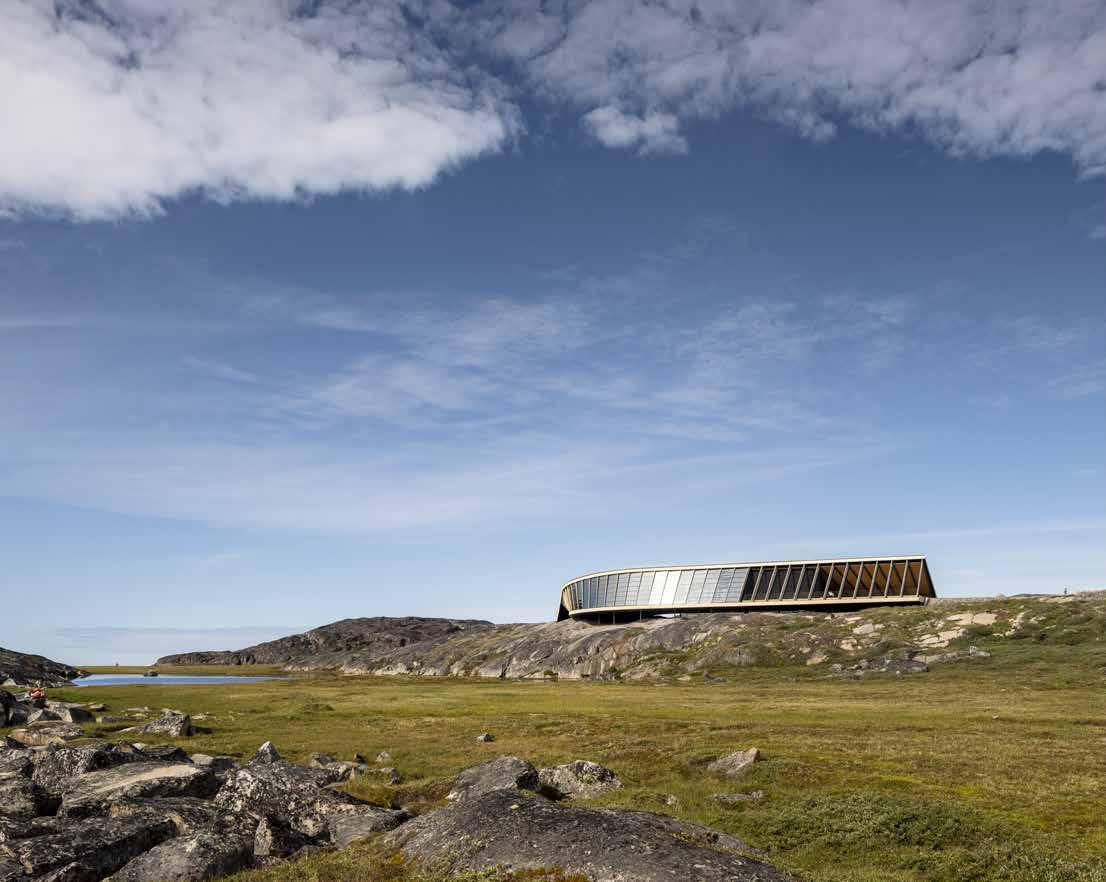

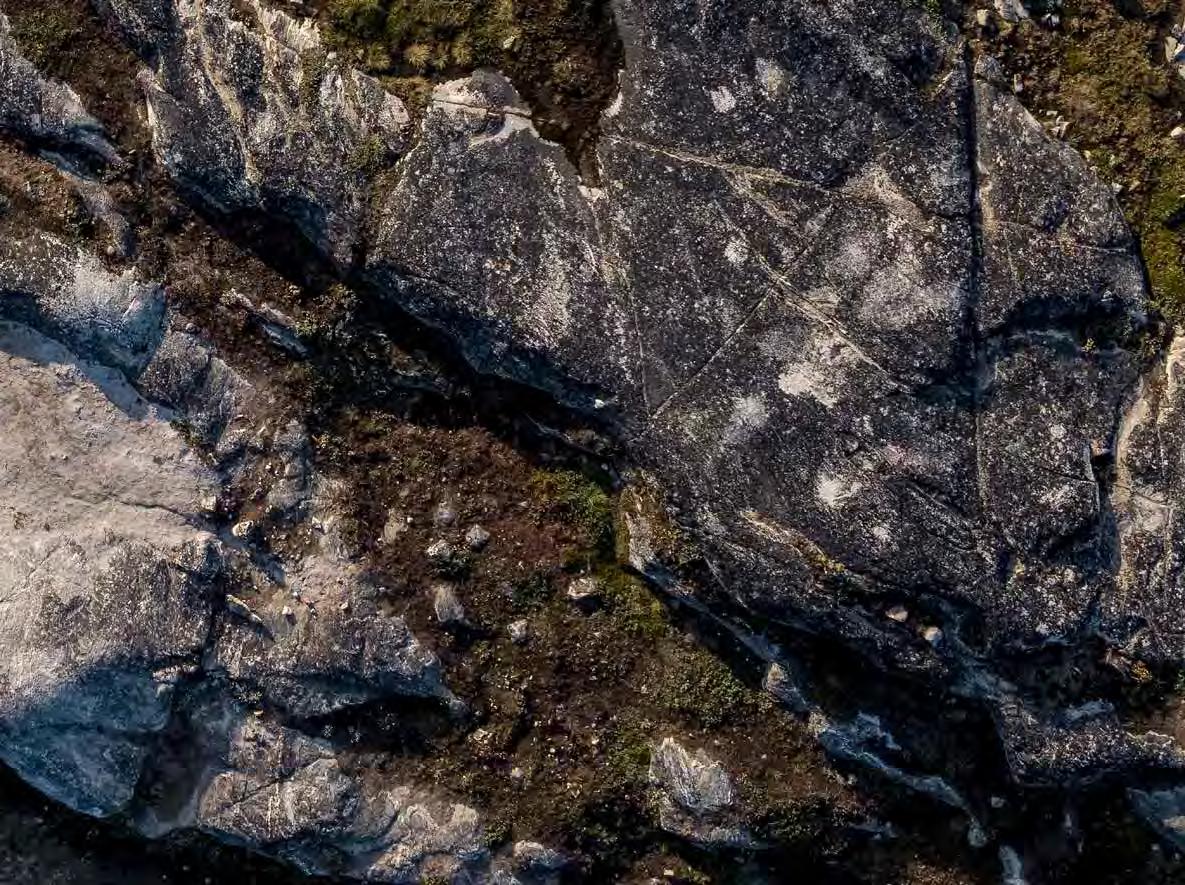
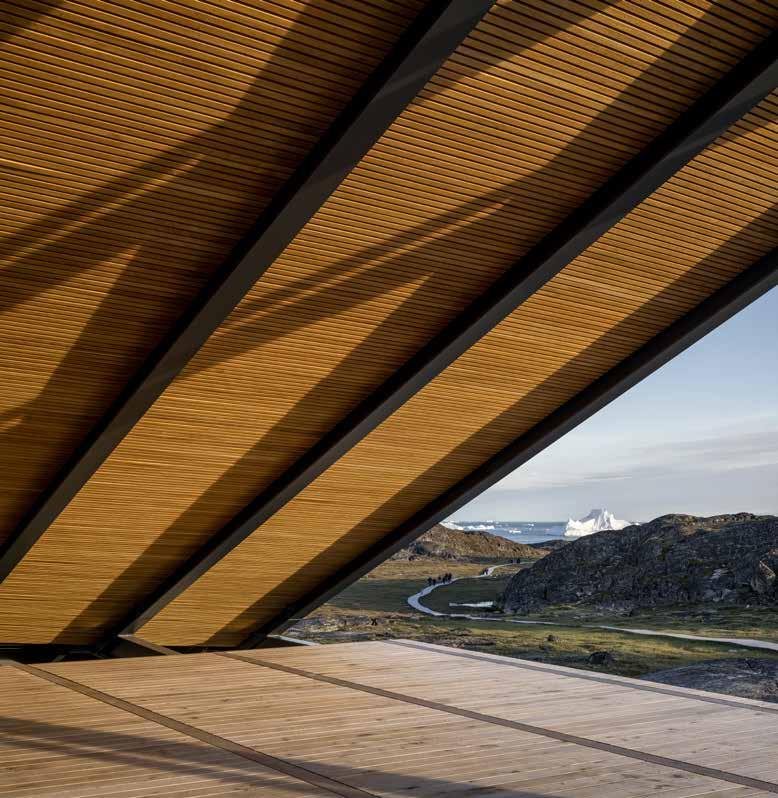
At either end of the Icefjord Centre, there is an open, covered space where visitors and passers-by can find shelter from the wind and snow. Along with the roof, the two sheltered spaces also serve as meeting places for both tourists and locals.
the partnership chose to initiate the development of the exhibition at an early stage in collaboration with the Danish exhibition architecture firm JAC Studios, which specializes in exhibition design around the world. In their proposal, the architects were asked to demonstrate how they would achieve a symbiosis between building and exhibition. The architecture competition was divided into two stages. Stage one included all six architecture firms, from which just three would go through to the second and final stage. First, the six teams were invited to Ilulissat, where Dorte Mandrup and her team focused mainly on developing an overview of the area and a sense of what was possible. ‘We were not able to measure the scale on-site, because there were no trees or houses, which meant we had no reference points. Instead, we gathered all the information we could and arranged a fly-over to get a proper impression of the landscape. We used this information to build a model of the landscape back in our studio, checking it against some 100 cross-sections from the area to make sure our vision did not obscure the sight lines from the UNESCO site. We carried out analyses and tests and made numerous models to find a solution. It is always important to be very humble and open towards the information we gather and then respond to it,’ Dorte Mandrup explains. One of the considerations was whether the Icefjord Centre should be buried within the terrain. However, the architects abandoned that idea because it would mean blasting a large part of the bedrock. They also considered a low building with a tower that would offer views of the Icefjord. That idea, too, was abandoned because a tower would be too visible in the landscape. Ultimately, the firm settled on a building the shape of a boomerang with a dynamic three-dimensional expression, where the roof was used as a viewing platform overlooking the Icefjord.
INSPIRED BY A SNOWY OWL ‘Our basic concept was to design a building that would bring together all the site-specific qualities and both underscore and elevate them. The site and the content were to determine the design of the building, so we chose to design a unique building that virtually clung to the edge of the cliff. We did not want to create an iconic work of architecture that could have been situated anywhere in the world, but of course we didn’t mind if it would develop into an icon over time. In addition, it was a natural choice for us to construct a one-storey exhibition and café building. An exhibition flow works best when everything is on the same level,’ says Dorte Mandrup. In the design of the building, the architecture team was inspired by a snowy owl with its wings spread out. The snowy owl is a large, strong bird that breeds in North and ‘This was the first time I discovered the role of architecture in relation to nature, which includes providing protection for people. That is an aspect I had never worked with before, since Danish nature is not dangerous. You also can’t truly get lost in Denmark, while it’s easy to get lost in Greenland. If you go off course, you could perish.’
– Dorte Mandrup, architect
THE SEVEN MEMBERS OF THE COMPETITION JURY
Lars Autrup, head of project, Realdania Thue Christiansen, artist, representative of the Government of Greenland
Ono Fleischer, representative of Qaasuitsup Municipality (now Avannaata Municipality), Greenland Hans Peter Svendler, special adviser Jan Søndergaard, professor, architect, partner, KHR Architecture Torben Schønherr, landscape architect, senior partner, Schønherr A/S Carsten Rode, professor, engineer, DTU Civil Engineering

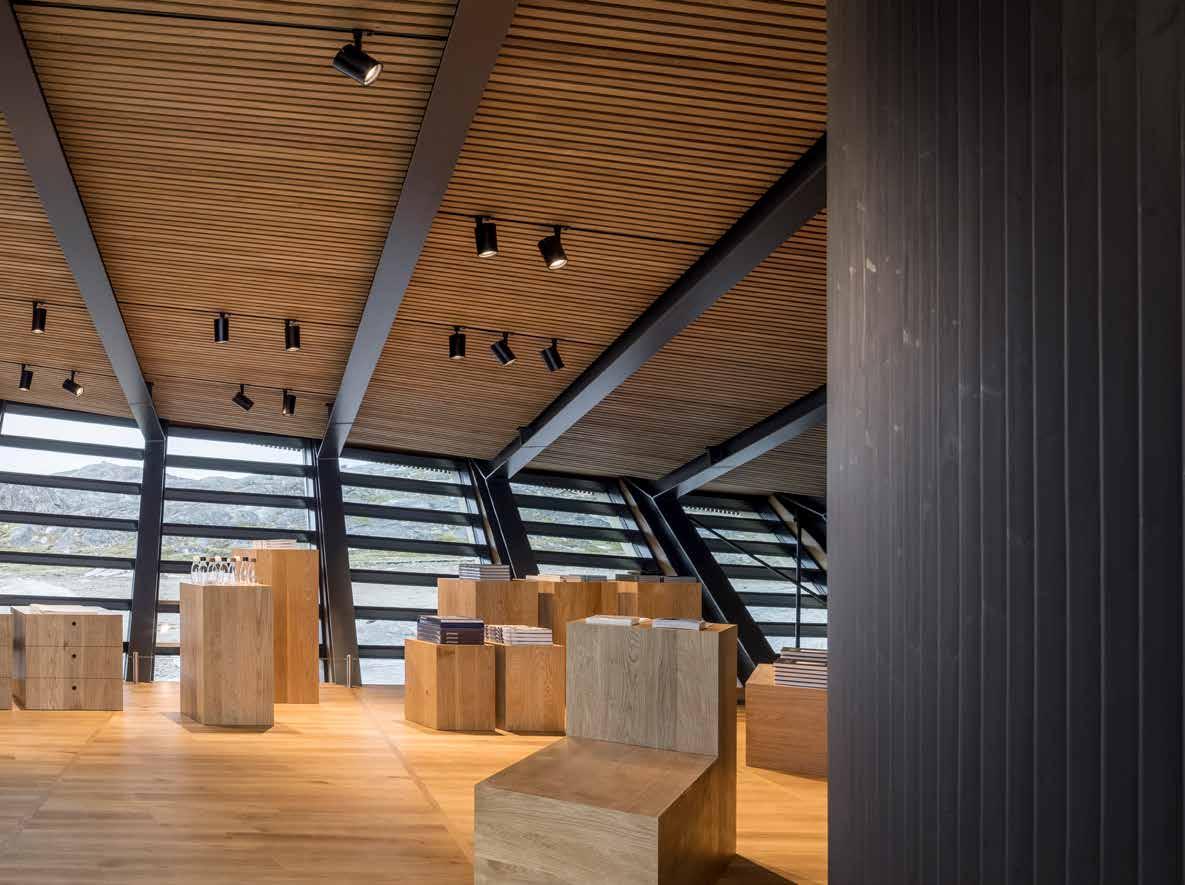
‘One of our key priorities was to make sure the Icefjord Centre was for everyone. And I think we achieved that. I have been told that the locals originally called it, in Greenlandic, “the tourist place” but that they now call it “everyone’s place”. That is a huge difference, which I am tremendously proud of.’
– Dorte Mandrup, architect
North-East Greenland, among other places, and flies low over the landscape. In another design feature, the building was raised up from the ground to give the visual appearance of floating above the rock. In addition to the snowy owl reference, this solution was also based on another consideration, says Dorte Mandrup: ‘It takes a long time to re-establish flora and fauna in Greenland. It’s a fragile landscape. So in order to do as little blasting as possible and minimize our impact on the landscape, we rose above the site and put the building on piles,’ she explains. ‘The key is to approach the landscape with humility and respect for the huge amount of time it took to evolve. Human beings have only been here a short amount of time, and we should be humble in our interactions with nature. The landscape is permanent, the building is secondary.’ During the process, the team learnt how big a role snow plays in relation to the architecture. Usually, an entrance is a sheltered spot, but sheltered spots are precisely where snow settles and builds up. Thus, the entrance had to be placed in a wind-swept spot, which was tested by placing a model in a wind tunnel. The experiences from this trial were also used to create and position two open, covered spaces, where visitors and passers-by could find shelter from the wind and snow. ‘This was the first time I discovered the role of architecture in relation to nature, which includes providing protection for people. That is an aspect I had never worked with before, since Danish nature is not dangerous. You also can’t truly get lost in Denmark, while it’s easy to get lost in Greenland. If you go off course, you could perish.’ During the sketching phase, it became clear that wind and snow were not the only challenges nature threw up. The building was designed with a huge glazed facade, and for sustainability purposes it was important to harness the passive solar heating. On the other hand, it was also important to avoid overheating in summer, when the sun never sets. This was achieved by rotating the building slightly. ‘In the early stages of the sketching process, we had a clear focus on functional issues, but we also tried to cover all the details that involve some sort of dilemma. What is the transition between indoors and outdoors in the winter time, when indoor and outdoor temperatures are so different? What are the possible technical solutions? How can we deal with dew points and prevent condensation in a highly insulated building when it is minus 30 degrees Celsius outside? For example, we could not have the timber constructions go from indoors to outdoors, as we would do in other parts of the world; that would create a condensation point, and the timber would rot. I am well aware that many people think an architect’s work is primarily about designing something that looks beautiful or impressive, but we dedicated a lot of time to making this building as technically safe as possible,’ says Dorte Mandrup.
A ROOF TURNED MEETING PLACE The brief for all six firms in the competition specified that the IIulissat Icefjord Centre was not just to be a tourist visitor centre; it should also be a meeting place for local residents and others who might not necessarily visit the exhibition inside. Since the Icefjord Centre would be situated as a hub for the area’s rambling trails, Dorte Mandrup chose to make the building’s roof a part of the trail system.
Situated in between the town and the Icefjord, Ilulissat Icefjord Centre forms a hub for the area’s rambling trails. Therefore architect Dorte Mandrup chose to make the building’s roof publicly accessible and integrate it into the trail system. From the roof, visitors can enjoy panoramic views of the fjord and the towering icebergs.
